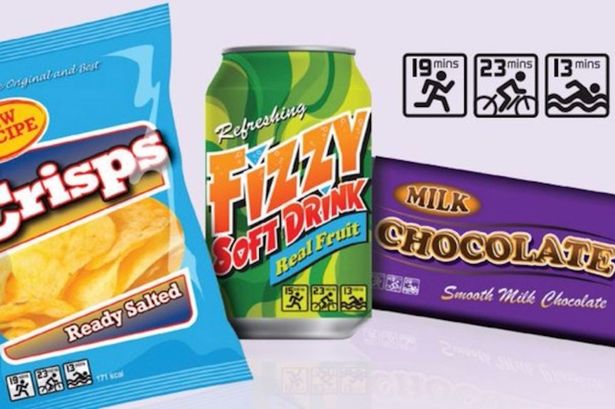-
Tips for becoming a good boxer - November 6, 2020
-
7 expert tips for making your hens night a memorable one - November 6, 2020
-
5 reasons to host your Christmas party on a cruise boat - November 6, 2020
-
What to do when you’re charged with a crime - November 6, 2020
-
Should you get one or multiple dogs? Here’s all you need to know - November 3, 2020
-
A Guide: How to Build Your Very Own Magic Mirror - February 14, 2019
-
Our Top Inspirational Baseball Stars - November 24, 2018
-
Five Tech Tools That Will Help You Turn Your Blog into a Business - November 24, 2018
-
How to Indulge on Vacation without Expanding Your Waist - November 9, 2018
-
5 Strategies for Businesses to Appeal to Today’s Increasingly Mobile-Crazed Customers - November 9, 2018
Food packets ‘should list exercise needed to burn calories’
The icons would be combined with a number representing the number of minutes you would need to spend doing that activity to burn off the calories in the food or drink item.
Advertisement
Polling suggests that more than half of people would change their behaviour as a result of viewing activity equivalent calorie information.
She said that putting this information on food and drink products “could be a logical solution to a multifaceted problem” and she added that the benefits of being physically active “go far beyond maintaining a healthy weight”. As such, that can would be labelled with a pictograph of a person walking with the figure 26 published beside it, or one of someone running with the number 13. The idea is to change an individual’s eating behavior using an “activity equivalent” chart, as people understand concepts more visually. To date, there has been little evidence that current food labels are managing to change consumer behaviour.
The goal is to shrink the gap between food and exercise and to help people understand how calories fit into their everyday life, and Cramer is betting that the labels have staying power.
“We think a clearer way of making people more mindful of the calories they are consuming is for a food or drink product to also show on the front of the packet a small icon which would visually display just how much activity you would need to do to burn off the calories it contains”, Shirley Cramer, chief executive of the RSPH, wrote in a BBC article.
Giving consumers an immediate link between foods’ energy content and physical activity might help to reduce obesity, she believes. She refers to how the Academy of Medical Royal Colleges has “described regular physical activity as a “miracle cure” because it boosts self-esteem, mood, sleep quality, and energy levels and reduces the risk of stress, depression, dementia, and Alzheimer’s disease”.
She acknowledges that messages of the importance of healthy and varied eating must also continue – and that some concerns have been raised about possible negative implications for people with eating disorders.
The recommendation comes after a poll for the RSPH showed that 65 per cent of the people would back such a change to food labels.
Advertisement
However, the introduction of “activity equivalent” calorie labelling could make a difference.





























